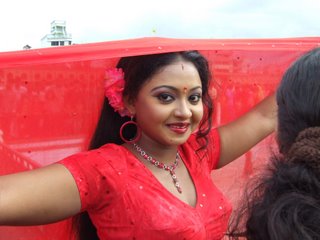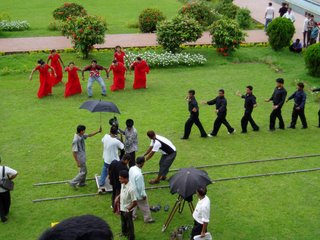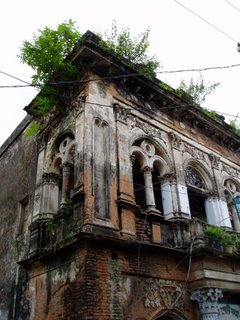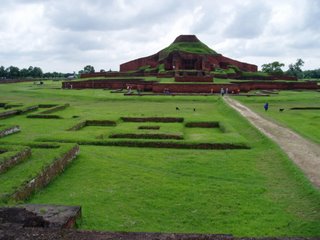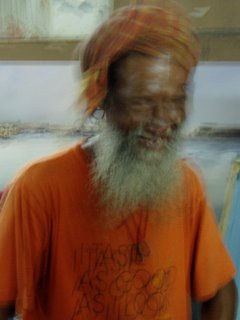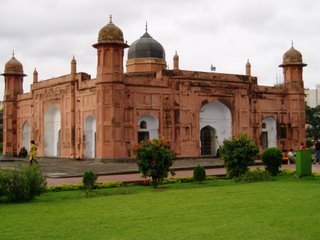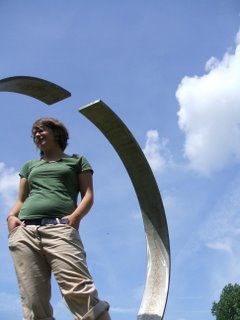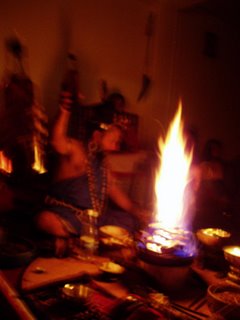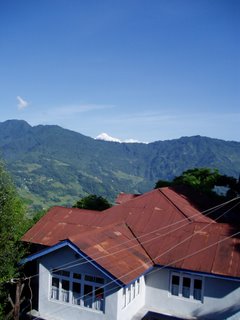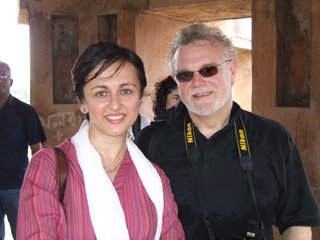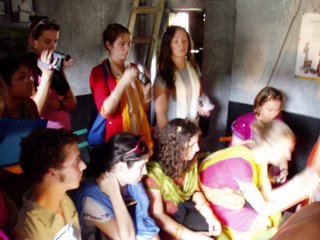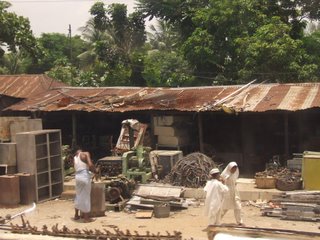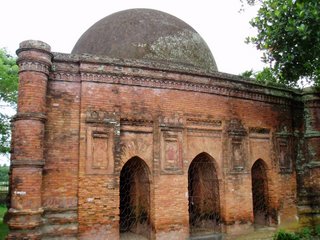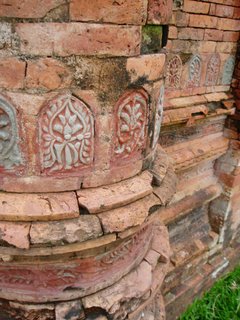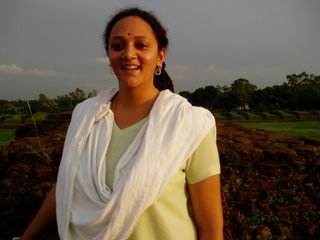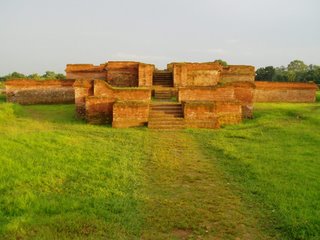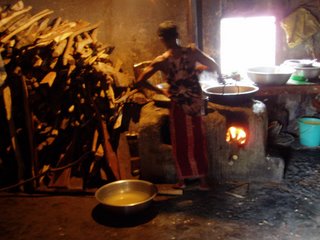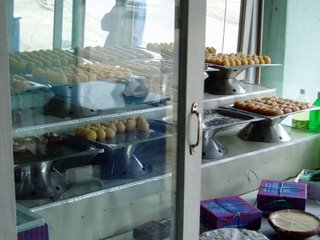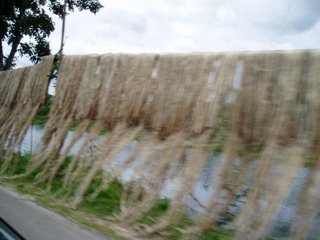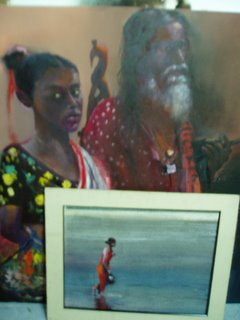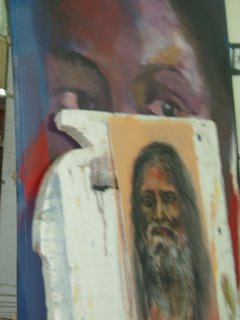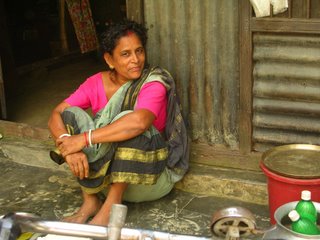| From Hell to Heaven on a tour bus
This past weekend we embarked on the second of our field trips for this summer program. Our destination was Chittagong district to the southeast of Dhaka. Chittagong borders Burma and it's jungle clad mountains are home to many different tribal Peoples of this area of the world. The northeast of India, Bangladesh, Burma, and Thailand all have tribal populations who still live in a form of their traditional ways, although their land and resources are always sought after. I was fired up to learn more about these traditons and other topics in Chittagong, Bangladesh's economic base city. Upon the start of our deluxe bus jouney, i saw the signs of trouble on the horizon. We reached our first destinaton Sonargoan, and the museum was closed that day. My ears perked up, because of the few things I learned living in this region of the world, a major law of the land to know, is that one must recgonize when something is not going your way. When you are trying to do something like mail a letter, or travel or buy something and it not working out for you, it is so important to recgonize it and try again or change the plan. If not, disaster strikes and intense frustration sets in. After walking around the village of Sonargoan and viewing ruins of zaminder (feudel lords) village holiday houses that were being devoured by trees and an ancient Mughal bridge and mosque constructions we boarded the bus to head out for Chittagong and that's when our residental director informed us that he would not be travelling with us and we were in the hands of our tour guides. Trouble! As subtle as this may sound I saw this as the second sign of trouble. Tour guides here are about making money and skimming as much off the sides as they can along the way. So we ate lunch at a really awful restaurant with half-cooked day-old rice, which was a result of this sketchy behavior. They have some agreement with this restaurant, and get a little something on the side and skim a little something off the top. After reaching the hotel, another lovely 3-star spot like our last trip for a village experience, it was time for dinner and another argument ensued over what food we were going to eat. Again these guys were trying to skim something off the top and give us the cheapest food possible, especially since we were missing our Director. Morale was low and our group was beginning to feel like this trip was a total bust. Day two, from hell to heaven we journeyed. I had a look at our itenerary and had to speak up about it. These tour guides are accustomed to taking out a group of Bengalis who want to be herded around like cattle from site to site. They didn't put together a tour for students and researchers who need more time at a place. Maybe even a whole day or half-day. I decided that if I was going to make it through this trip with my sanity intact, then I would have to speak up about our goings on. So, as many of you know how I do, I took over and started direting things. I whittled down the schedule and changed the timings of our day. Less sites and more rest.....which would prove to be badly needed. Our first stop, the pits of hell was what we called it, the great ship-breaking yards of Chittagong. Bangladesh accepts about 80% of the world's ship waste. This means that as huge cargo ships die, they are bought in auction, brought to Chittagong, and dismanteled over the course of 6-8 months, BY HAND!! First of all, if anyone had any sense they would have thought that we students have no business going to an unsafe place like that. I'm not talking terrorism and violence, i'm talking about scrap metal sitting around in piles as far as you can see. The air is black with chemical smoke and oil and tar. As we entered one of the 30 ship-breaking yards in Chittagong, Small black bodies covered in soot and oil popped up from various work areas of the yard to gaze at the 15 foreigners who had arrived. Within minutes we had a crowd of at least one hundred men who worked there around us gazing and of course making comments. At the edge of the shorse sat, five massive cargo tankers all being dismanteled. They are towed in during the full moon high tide, and then sit as a crew comes in to dismantele the entire ship with hand tools and welders. It was the most amazingly disgusting environmental tragedy that I have even seen in my life. The entire group of us were in shock, both at the site, and at the idea that we came to this hell on earth. If someone brought a meter reading nuclear radiation I can only imagine what it would say. Bangladesh is the cheapest country in the world for ship-breaking and is notorious for accepting environmentally hazardous waste ships. How does this industy effect the surrounding communities? Environmentally they measure that the pollution goes for about 20-30 kilomenters around the area. There was a pond behind the yard that people were taking bath in and washing dishes. I couldn't believe it. That water was basically toxic waste. Just behind the compound people were growing rice and vegetable....and i think also second heads. The ships are bought in their entirity. So surrounding the ship-breaking yards are vendors of different ship matter. The beds, toilets, fixtures, life bouys, furnitures, wood, metal, ladders, gas tanks, and you name it all for sale. Apparently newly married couples who are starting household come down here to buy things cheap. We loaded the bus, still in shock to head past all the ship-stuff vendors and onto the Ethnological Museum. This would be our only chance to learn something about the tribal Peoples of Bangladesh. The tribal Peoples of Bangladesh are not very present in the government, but some do run their communities at the local level. Central government decisions, since the time of the British in this region, have exploited these Peoples and taken away their rights of self-determination. During the trip to the Ethnological Museum in Chittagong, the way Native Peoples are viewed by the mainstream is clear to see before your eyes. Starting with a painting of the 'four races of the world' that looks like a cartoon, to the introductory words that described the tribals of Bangladesh as simple, ignorant of the modern world, and living today in 'half-baked' communities. Wow! By this point in time we are not hoping for much to an already torturous day. The museum was built in 1962, when Bangladesh was East Pakistan and under the boot of West Pakistan. The museum is a tribute to the tribal Peoples of Pakistan as much as the tribal Peoples of Bangladesh. I couldn't believe that this place was still standing after the Liberation War of 1971. The displays was from 1962, never changed since, and amazingly outdated. By the time we reached there, because of the funnyness of the tour guides we were allotted 30 minutes until hearded onto the next site. After a quick lunch at the hotel, we were back on the bus for our afternoon sites to Sufi communities of Chittagong. Definetly cool stuff and very relevant to me, but these tour guides had us down, boot on the neck. Since there was very little organization and information being given, the students had no idea where we were or what we were looking at, and that can be such a frustrating experience. So i stepped up and gave as much an intro as i could. That added another element to the power struggles going on amongst the teachers and tour guides. Oh the fun of personality clash! The first shrine we visited had a strong energy about it. This Persian saint came over with two turtles, whose generations have populated the pond beside the shrine complex. These turtles we some of the saddest turtles I've seen, looking so unhealthy on their shell, skin and eyes. They were lined up at the side of the pond, to receive the offerening of bannanas and bread on little sticks from visiting pilgrims. From there we travelled an hour and a half to another Sufi community center. This is a living community, centered around a lineage of Pirs (teacher-masters). The central shrine, an artful white dome shaped lilke flower petals houses the shrine of the passed master. His son is in charge now. As we entered, the call to prayer sounded and all the teachers wanted to go for prayer. As they entered they were a bit shocked as the followers did not face the direction of Mecca, but rather faced the shrine of the Pir Baba. After completing prayers, we went for an audience with the son-in charge. We were hardly involved in the discussion, as the male tour guides dominated the conversation, and were visibly being rude to our head teacher, a woman. They were cutting her off left and right, even when she was translating the discussion for us. It was like the power struggles on the trip were only getting worse, no matter in the pits of hell of the ship-breaking years, or in the shrine of a reveared Sufi master. Day three we departed from Chittagong, headed for a Vaishnavite (Hindu) community in the area. Once again, I went into lecture mode, especially since it was so visible to the students that our staff was breaking down now. That helped the students, but angered the staff, and made me feel like when will the hellish trip end? People just need to learn how to make the best of things, you know? After about 3 and a half hours in the bus we stopped for lunch, where? At the same crappy restaurant as on the way to Chittagong. By this time we students are cracking up about the whole thing and can't wait to get home. The bum part of it, as morale was so low, we still had one more site to visit, Mainimati, also known as Devaparbata, one of the greatest seats of Buddhist learning and practice in Bengal. I for sure was on the let's-make-the-best-of-it team, and the chance to go to the land of great Masters like Tilopa and Naropa was a real gift. So through the perseverence of hell and this trip, we reached Devaparbata, the heavenly abode of the gods. Another ruins site, the museum housed giant bronze images and many basalt and terracotta images found during excavations. Actually, this site is largely unexplored. The old Bengali art style is so incredibly beautiful and was the origin of other Buddhist asthetics found in trans-Himalaya. Some of the images were very resonant and gracefully humbling. I gave a little lecture here too, to whomever wanted to listen, no hands tied. I couldn't let the opportunity go to share my own excitement at being at this place, and getting, just an hour of course, to soak the vibe in. Devaparbata pre-dates Vikramshila, Nalanda, and Somapura Vihara (where we visited in Bogra on the last trip). Devaparbata's design is similar to Buddhist study and practice centers found in Swat (like Taxilia), modern day Afghinastan-Pakistan. The desings of later monastic learning center are based on Devaparbata including in Java and Sumantra. The sun was setting as we were being hustled out by the guards, the work day was over and they wanted to go home. It had rained earlier, and with the golden rays of the sun resting on the exposed brick colums of the site's ruins, I gazed behind me at a huge rainbow, a full bow, extending across the entire sky. Ah, at last a good sign. | 